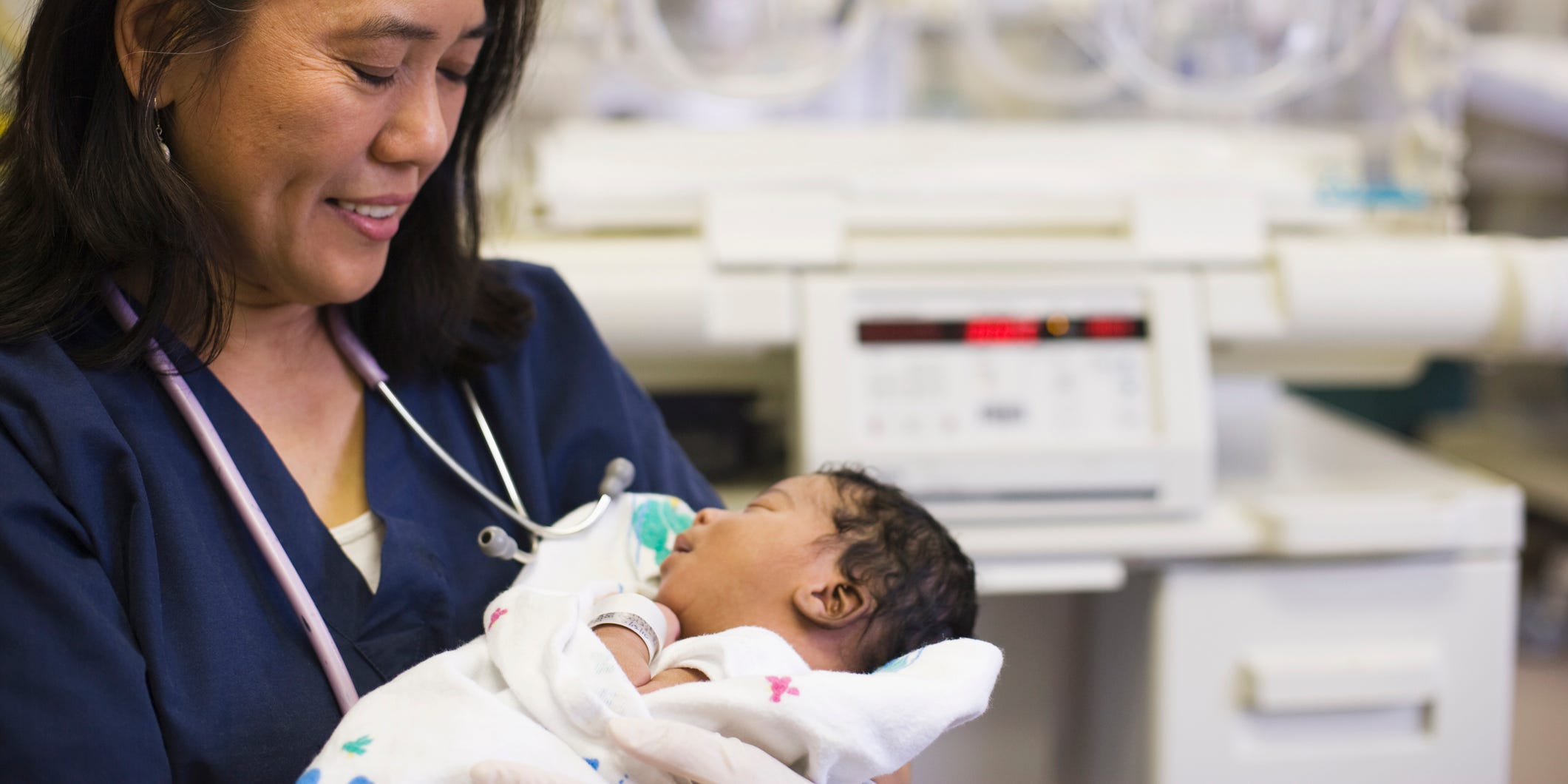
ER Productions Limited/Getty Images
- Experts predict the pandemic may lead to 300,000 fewer births in 2021.
- New data from states that track births in near-real-time offer clues about a possible birth rate slow-down.
- The pandemic decline compounded with years of falling birth rates could have long-lasting impacts.
- Visit Insider’s homepage for more stories.
Months of economic hardship, public health panic, and tenuous confidence in the future have led to the beginnings of a pandemic-driven “baby-bust.”
New data from some states that track births in near-real-time offer clues about a possible decline in the birth rate, according to a new NBCLX report.
Phillip Levine, an economics professor at Wellesley University, and Melissa Kearney, an economics professor at the University of Maryland, published a report this summer predicting the pandemic could result in half a million fewer births in 2021. They updated their estimate in December, projecting the number may be closer to 300,000, but stood by their prediction that the virus will lead to a large reduction in children born this year.
The pandemic and its resulting lockdown measures began impacting most Americans in mid-March. December – nine months later – marked the first month babies conceived during the pandemic started being born, allowing for the first pieces of pandemic birth rate data to emerge.
December 2020 birth rates in Florida were down 8% from December 2019, according to NBCLX. Ohio’s December rates were down 7% from the previous year and Arizona saw a 5% decrease, the outlet reported.
And it's not just birth rates declining. Philip Cohen, a sociologist and demographer at the University of Maryland, found that Google searches for contraception, sex advice topics, and pregnancy, all fell in 2020.
But Levine warned against drawing any national conclusions about the shortage from only a few states' data, and noted that preliminary birth data for the first half of 2021 won't be out until the fall.
"It's going to be months really before we have some indication of what actually happened," Levine told Insider.
When that bust does start to materialize, though, the consequences could be long-lasting.
"What I think is important to keep in mind, is that we're talking about 300,000, say, fewer births now, but that's compounded on top of the half a million fewer births that are already taking place over the past decade or so," Levine said.
The national birth rate has been falling since 2007, when it hit a peak at 4.3 million. Levine said experts aren't really sure why the birth rate has continued to fall in subsequent years, though earlier drops are often linked to the Great Recession. In 2019, the provisional number of births in the US was 3.7 million, according to the Centers for Disease Control.
"At this point, 300,000 births in one year, one time, isn't really that big of a deal for the broader economy and society as a whole," Levine said. "But you start finding yourself down close to a million births a year, for several years, so those trends continue, and that's going to have important implications for the country going forward.
Those implications could be both social and economic, according to Levine. In terms of the economy, more people equates to more workers and a bigger economy. But the opposite is true as well.
"If you think about following kids through their lifespans, you're talking about school enrollments falling for the next couple of years. You're talking about a smaller college entry cohort," Levine said. "A little bit after that, you're talking about entering the labor force."
Fewer workers in the labor force would impact social security, Levine said, since social security is financed through tax contributions of current employees.
And the impacts go beyond the economy.
"You don't have to go much further than thinking about what the Baby Boom has done to American society to think about what a large cohort can do," Levine said. "A small cohort can have the opposite effect."
It's not clear when, or if, trends will return to normal once the pandemic ends, Levine said. Just because public health measures return to normal and vaccinations become commonplace, doesn't mean the economy will immediately bounce back. Levine said it could take years to recover.
"To the extent that the fertility effects that we're likely to see this year are based on economic conditions, those are likely going to continue for a while."